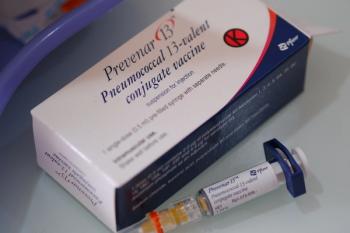
Exploring Geographic Barriers to Care Access for Patients With Pulmonary Arterial Hypertension
Some patients with PAH need to travel long distances, which may impact their access to quality care providers.
The majority of patients with pulmonary arterial hypertension (PAH) live in an area that has a shortage of health care professionals, according to research presented at the 2023 American Thoracic Society International Conference, held from May 19 to 24 in Washington, DC.1
Investigators conducted a retrospective claims-based study to understand the geographic characteristics of patients treated for PAH in the United States. A sample of commercial, managed Medicaid and Medicare Advantage claims data was gathered from the Inovalon closed claims database. Data on Medicare fee-for-service Parts A/B/D also was collected.
The study cohort included 10,677 patients aged between 48.8 and 71.3, of which the majority were women. Patients were required to have 12 months of pre- and post-index of continuous enrollment in medical and pharmacy benefits. Index was defined as the date of the first claim with a PAH diagnosis.
Enrollment ZIP codes were used to determine whether a patient lived in a health professional shortage area and distance to their prescriber was measured by the straight-line distance from the patient's ZIP code to the address of the prescriber of first PAH treatment.
Investigators found that the majority of patients lived in urban areas that were in either a full or partial primary care health professional shortage area. The median distance to the provider was 14.5 for fee-for-service, 17.1 for commercial, 10.9 for managed Medicaid and 8.5 for Medicare Advantage. Additionally, 28% of fee-for-service, 23% of commercial, 16% of managed Medicaid and 9% of Medicare Advantage patients need to travel 240 miles to their prescriber.
“In this retrospective claims-based study, the majority of patients with PAH live in a health professional shortage area shortage area, and some travel long distances from suburban/rural areas to their Providers,” the authors wrote. “This may impact access to quality, specialty care. Patient interventions could focus on reaching patients that experience geographic barriers to PAH care access.”
Reference
1. Anderson N, Schablik J, Classi P, et al. Understanding Differences in Geographic Access to Care Among Patients Treated for Pulmonary Arterial Hypertension in the United States. Presented at: American Thoracic Society International Conference; May 19-24, 2023; Washington, DC. Poster 1093.
Newsletter
Pharmacy practice is always changing. Stay ahead of the curve with the Drug Topics newsletter and get the latest drug information, industry trends, and patient care tips.















































































































